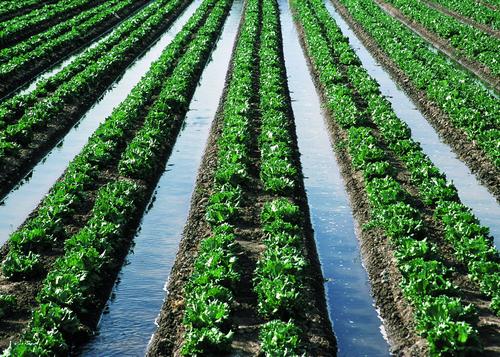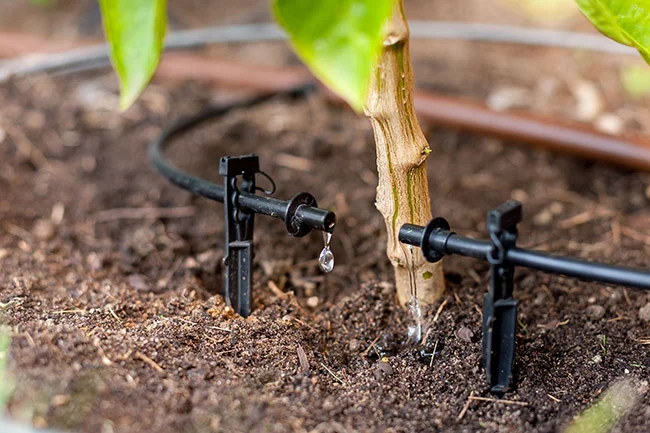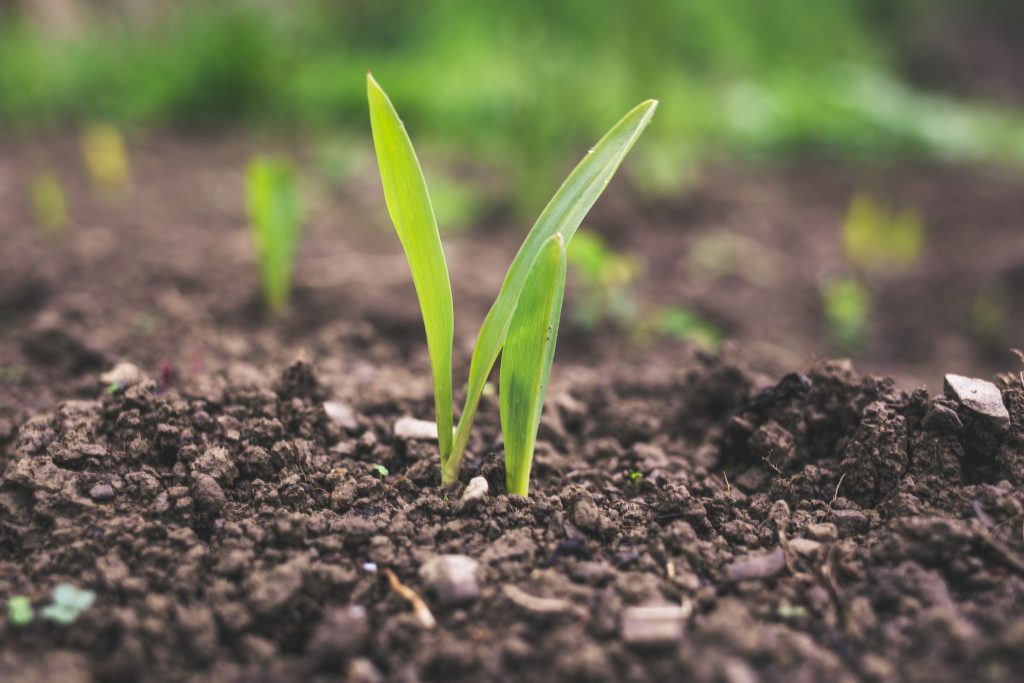In the vast landscape of agriculture where the growth of crops is not solely dependent on nature, the role of irrigation systems is paramount. As we look into the intricacies of agriculture, it becomes evident that irrigation systems are the backbone of sustainable crop production. This article aims to explore the various facets of irrigation systems in agriculture, shedding light on their types, importance, and the profound impact they have on our food production.
What is Irrigation?
Irrigation, in essence, is the artificial application of water to the soil to assist in the growth of crops. It is a practice that has been integral to agriculture for centuries, dating back to ancient civilizations. The primary goal of irrigation is to provide adequate water to plants, ensuring optimal conditions for their development and maximizing crop yield.
Types of Irrigation Systems in Agriculture
- Surface Irrigation
- Drip Irrigation
- Sprinkler Irrigation
- Subsurface Irrigation
- Center Pivot Irrigation
- Lateral Move Irrigation
- Manual Irrigation
1. Surface Irrigation

Surface irrigation is one of the oldest and most traditional methods. In this system, water is distributed over the soil surface by gravity flow. It includes furrow, basin, and border irrigation. While it’s a widely used technique, advancements have led to more efficient systems.
2. Drip Irrigation

Drip irrigation is a modern and efficient method where water is delivered directly to the base of each plant through a network of tubes or pipes. This targeted approach minimizes water wastage and ensures that each plant receives the required amount.
3. Sprinkler Irrigation

Sprinkler irrigation mimics natural rainfall by distributing water over the crops through a system of pipes and pumps with the help of rotating nozzles. This method is suitable for a variety of crops and is highly adaptable to different terrains.
4. Subsurface Irrigation
Subsurface irrigation involves applying water below the soil surface directly to the root zone. This method minimizes water loss due to evaporation and is particularly beneficial in arid regions.
5. Center Pivot Irrigation
Center pivot irrigation is a circular arrangement of sprinklers mounted on wheeled towers. This system is commonly used for large-scale crop cultivation, providing a systematic and automated way of watering vast areas.
6. Lateral Move Irrigation
Similar to center pivot, lateral move irrigation also utilizes a series of pipes with sprinklers. However, in this method, the pipes move laterally, covering rectangular fields. It combines the advantages of both center pivot and stationary systems.
7. Manual Irrigation
In areas where technological solutions are not feasible, manual irrigation still plays a crucial role. Farmers manually transport water to the fields, employing methods like watering cans or simple hose systems.
Methods of Irrigation
There are two main methods of irrigation and they are;
- Traditional Method
- Modern method
Traditional method of irrigation
Traditional methods of irrigation have been an integral part of agriculture for centuries. These methods, often characterized by simplicity and reliance on manual labor, have played a crucial role in sustaining agriculture in diverse landscapes. Examples of traditional irrigation methods include;
- Surface irrigation
- Bucket irrigation
- Treadle pumps
- Check basin irrigation
Modern method of irrigation
In response to the increasing demands of a growing global population and the need for sustainable agriculture, modern methods of irrigation have emerged. These advanced techniques leverage technology and engineering to optimize water use, improve efficiency, and enhance crop yields. Examples include;
- Drip irrigation
- Sprinkler irrigation
- Center pivot irrigation
- Remote sensing technology
- Smart Irrigation systems
Importance of Irrigation
Irrigation serves as a lifeline for agriculture, and its importance cannot be overstated. Here are eight key reasons why irrigation systems are indispensable:
- Crop Yield Enhancement
- Risk Mitigation
- Seasonal Crop Management
- Improved Soil Structure
- Efficient Water Use
- Agricultural Expansion
- Consistent Livelihoods
- Economic Growth
1. Crop Yield Enhancement
Irrigation ensures a consistent and reliable water supply, promoting optimal conditions for crop growth. This leads to increased yield and better quality produce.
2. Risk Mitigation
In rain-fed agriculture, the dependency on unpredictable weather patterns poses a significant risk. Irrigation acts as a safeguard, reducing the vulnerability of crops to droughts or erratic rainfall.
3. Seasonal Crop Management
Irrigation allows farmers to cultivate crops throughout the year, irrespective of natural rainfall patterns. This flexibility in planting and harvesting times contributes to better farm management.
4. Improved Soil Structure
Regular and controlled water application enhances soil structure. It prevents soil erosion and degradation, maintaining the fertility of agricultural land over the long term.
5. Efficient Water Use
Modern irrigation systems, such as drip and sprinkler, are designed for efficient water use. They minimize water wastage and contribute to sustainable water management.
6. Agricultural Expansion
Irrigation facilitates the expansion of agricultural activities to previously uncultivated or arid lands. This expansion is critical for meeting the growing global demand for food.
7. Consistent Livelihoods
By providing a reliable water source, irrigation systems contribute to the stability of farmers’ livelihoods. Consistent crop production ensures a steady income for agricultural communities.
8. Economic Growth
The positive impact of irrigation on crop yield and quality translates into economic growth. Increased agricultural productivity stimulates the overall economy by creating employment and supporting related industries.
The bottom line
Irrigation systems help in efficiency, resilience and abundance when it comes to agriculture. From the ancient techniques of surface irrigation to the precision of modern drip systems, the evolution of these methods signifies a journey towards sustainable food production.
Irrigation systems in agriculture are not just a means to an end; they are the catalysts for growth, the guardians of livelihoods, and the architects of a future where fields flourish, and hunger fades away. As we continue to refine and innovate these systems, we embark on a journey towards a greener, more bountiful world – one where the roots of our crops intertwine with the ingenuity of irrigation, yielding a harvest that sustains us all.
FAQs
1. What is the meaning of irrigation?
Irrigation is the artificial process of supplying water to soil or land to assist in the growth of crops. It is a crucial practice in agriculture to ensure that plants receive an adequate and consistent water supply, promoting optimal growth and maximizing crop yield.
2. What are the types of irrigation?
There are various types of irrigation, each with its unique method of delivering water to crops. They are; surface irrigation, drip irrigation, sprinkler irrigation, subsurface irrigation, center pivot irrigation, lateral move irrigation & manual irrigation
3. What is smart irrigation?
Smart irrigation involves the use of advanced technologies such as sensors, weather forecasts, and real-time data to optimize the watering of crops. It aims to enhance efficiency, conserve water, and adapt irrigation schedules based on specific environmental conditions, ensuring precise and sustainable water use.
4. What do you mean by micro-irrigation?
Micro-irrigation refers to a water-efficient method where water is delivered directly to the root zone of plants in small, controlled amounts. This includes drip irrigation and sprinkler systems, minimizing water wastage and ensuring that each plant receives the necessary water for optimal growth.
5. What is bucket irrigation?
Bucket irrigation is a traditional method where farmers manually carry water in buckets and pour it onto crops. While it is a labor-intensive process, it is often used in areas with limited access to more advanced irrigation systems or in situations where a more hands-on approach is necessary.
